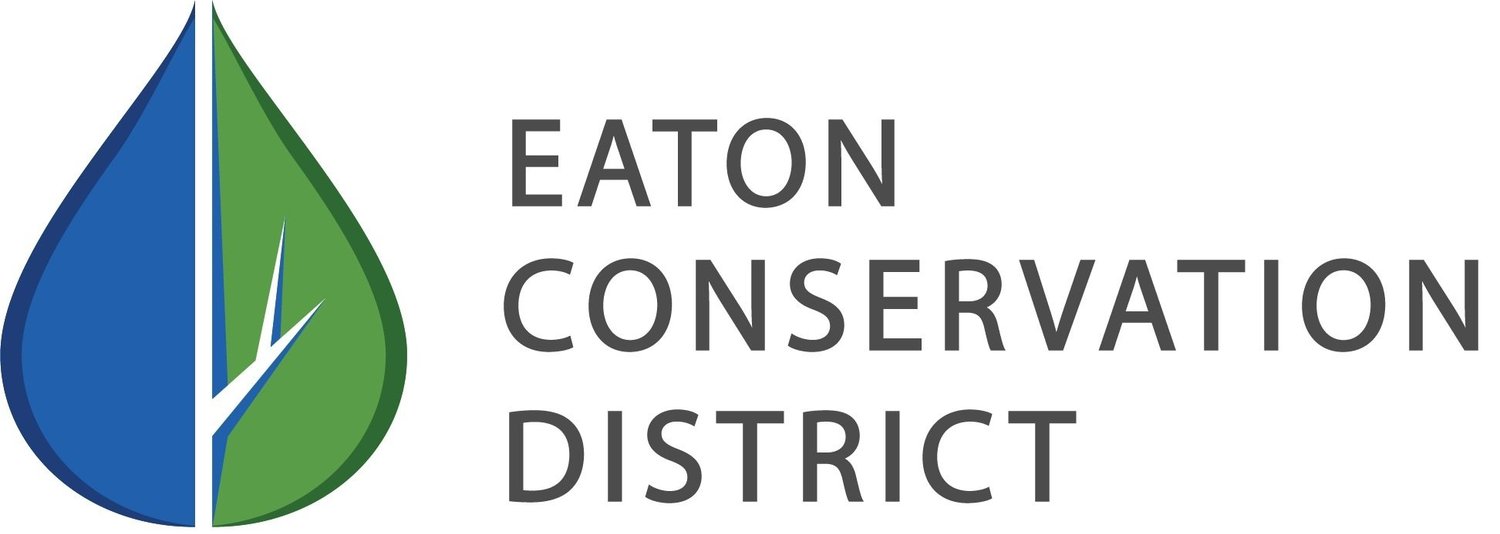Shellbark Hickory
Size: 12-18”
Soil Moisture: Moist-Wet
The Shellbark Hickory, Carya laciniosa, is native to some areas in the Midwest, including southern Michigan. The Latin species name means “with flaps or folds” referring to the tree’s shaggy bark. The nuts produced by the Shellbark Hickory tree are the largest hickory nuts and tend to be sweet, making them one of the most desirable hickory nuts for human consumption. Wildlife also enjoys the nut, including quail, wild turkeys, deer, foxes, and other species.
The tree has a straight trunk, a narrow-rounded crown foliage and large leaves. The wood produced by this tree can be used for a multitude of items like furniture, tool handles, charcoal, and drumsticks.
The Shellbark Hickory tree needs a high amount of water, along with moist and wet soil. The tree can handle shaded and partly shaded areas but does prefer a location where sun is available.
While usually slightly shorter, the Shellbark Hickory can reach heights of 130 feet.
Do not plant under powerlines.
*A mature height of less than 15 feet is recommended for trees planted near power lines. Tall growing trees should be planted a minimum of 20 feet away from power lines, and 50 feet away to avoid future pruning.
*This plant will be packaged as "bare root". Bare root plants have no soil around their roots. Bare root trees, shrubs, and perennials must be planted as soon as possible before growth begins. Find care and planting instructions here: https://www.arborday.org/trees/planting/bare-root.cfm
Item only available in bundles
Available through the Spring Tree Sale. Pick up from Kardell Hall, Eaton Co. Fairgrounds
Friday, April 11, 2025 9AM to 6PM
Saturday, April 12, 2025 9AM to 11AM
Photo Credits:
Fruit: Leaf and Fruit; missouribotanicalgarden.org
Bark: Trunk and Leaves Close up; missouribotanicalgarden.org
Size: 12-18”
Soil Moisture: Moist-Wet
The Shellbark Hickory, Carya laciniosa, is native to some areas in the Midwest, including southern Michigan. The Latin species name means “with flaps or folds” referring to the tree’s shaggy bark. The nuts produced by the Shellbark Hickory tree are the largest hickory nuts and tend to be sweet, making them one of the most desirable hickory nuts for human consumption. Wildlife also enjoys the nut, including quail, wild turkeys, deer, foxes, and other species.
The tree has a straight trunk, a narrow-rounded crown foliage and large leaves. The wood produced by this tree can be used for a multitude of items like furniture, tool handles, charcoal, and drumsticks.
The Shellbark Hickory tree needs a high amount of water, along with moist and wet soil. The tree can handle shaded and partly shaded areas but does prefer a location where sun is available.
While usually slightly shorter, the Shellbark Hickory can reach heights of 130 feet.
Do not plant under powerlines.
*A mature height of less than 15 feet is recommended for trees planted near power lines. Tall growing trees should be planted a minimum of 20 feet away from power lines, and 50 feet away to avoid future pruning.
*This plant will be packaged as "bare root". Bare root plants have no soil around their roots. Bare root trees, shrubs, and perennials must be planted as soon as possible before growth begins. Find care and planting instructions here: https://www.arborday.org/trees/planting/bare-root.cfm
Item only available in bundles
Available through the Spring Tree Sale. Pick up from Kardell Hall, Eaton Co. Fairgrounds
Friday, April 11, 2025 9AM to 6PM
Saturday, April 12, 2025 9AM to 11AM
Photo Credits:
Fruit: Leaf and Fruit; missouribotanicalgarden.org
Bark: Trunk and Leaves Close up; missouribotanicalgarden.org
Size: 12-18”
Soil Moisture: Moist-Wet
The Shellbark Hickory, Carya laciniosa, is native to some areas in the Midwest, including southern Michigan. The Latin species name means “with flaps or folds” referring to the tree’s shaggy bark. The nuts produced by the Shellbark Hickory tree are the largest hickory nuts and tend to be sweet, making them one of the most desirable hickory nuts for human consumption. Wildlife also enjoys the nut, including quail, wild turkeys, deer, foxes, and other species.
The tree has a straight trunk, a narrow-rounded crown foliage and large leaves. The wood produced by this tree can be used for a multitude of items like furniture, tool handles, charcoal, and drumsticks.
The Shellbark Hickory tree needs a high amount of water, along with moist and wet soil. The tree can handle shaded and partly shaded areas but does prefer a location where sun is available.
While usually slightly shorter, the Shellbark Hickory can reach heights of 130 feet.
Do not plant under powerlines.
*A mature height of less than 15 feet is recommended for trees planted near power lines. Tall growing trees should be planted a minimum of 20 feet away from power lines, and 50 feet away to avoid future pruning.
*This plant will be packaged as "bare root". Bare root plants have no soil around their roots. Bare root trees, shrubs, and perennials must be planted as soon as possible before growth begins. Find care and planting instructions here: https://www.arborday.org/trees/planting/bare-root.cfm
Item only available in bundles
Available through the Spring Tree Sale. Pick up from Kardell Hall, Eaton Co. Fairgrounds
Friday, April 11, 2025 9AM to 6PM
Saturday, April 12, 2025 9AM to 11AM
Photo Credits:
Fruit: Leaf and Fruit; missouribotanicalgarden.org
Bark: Trunk and Leaves Close up; missouribotanicalgarden.org


